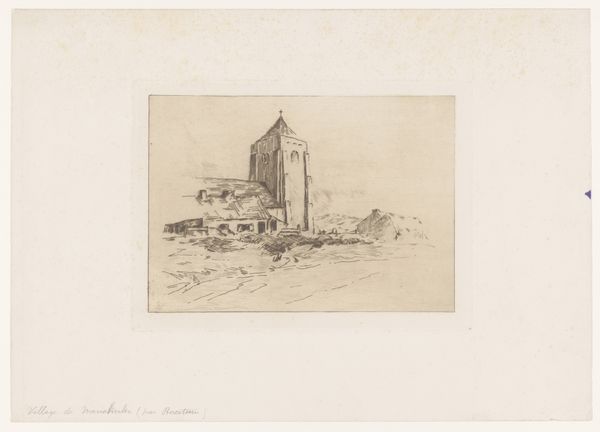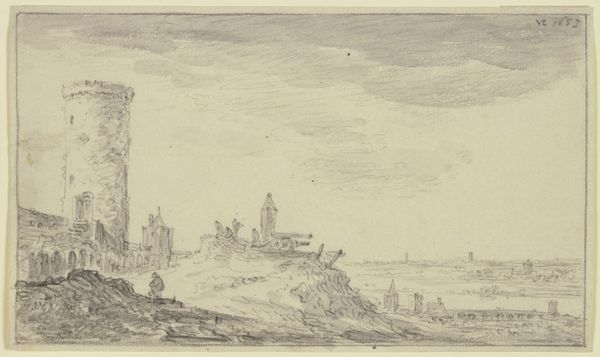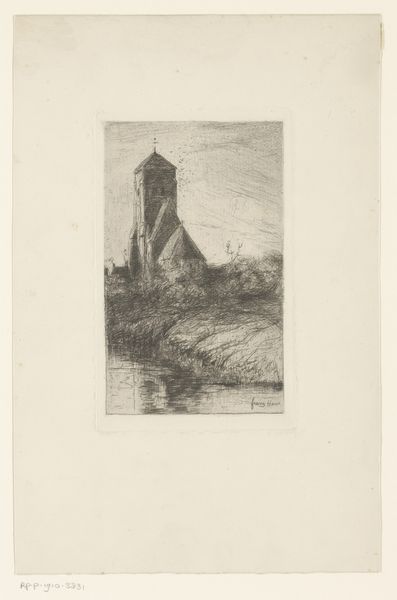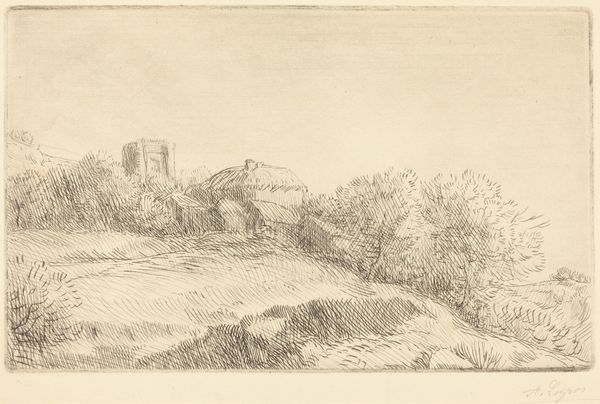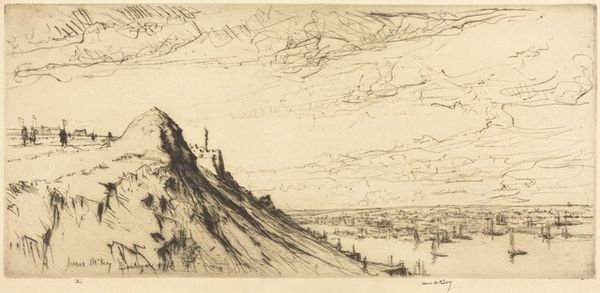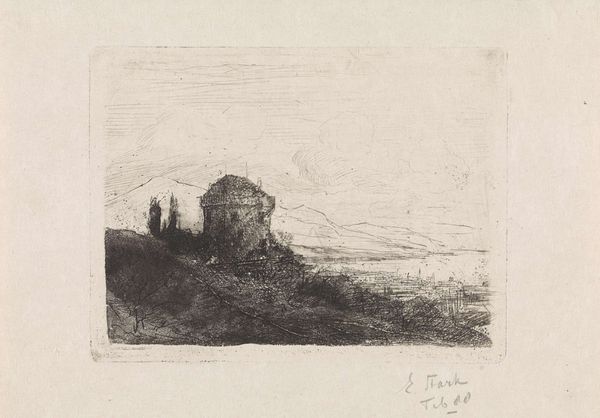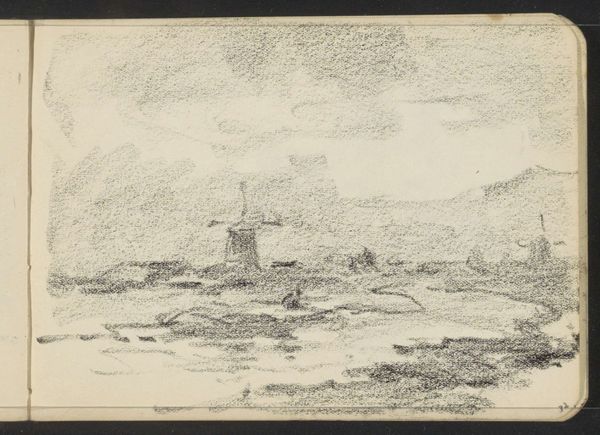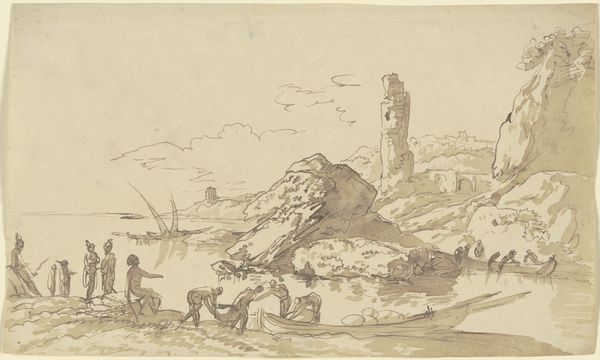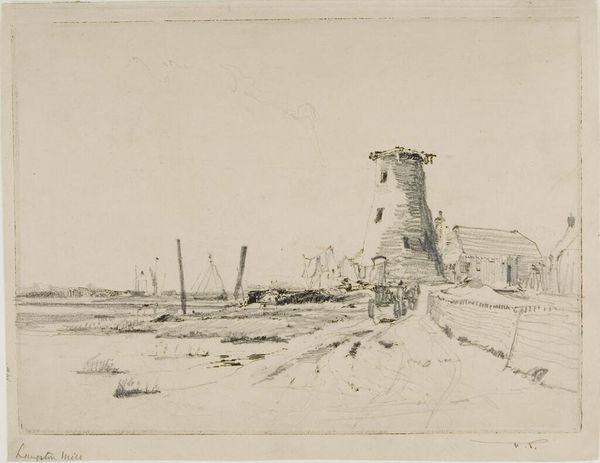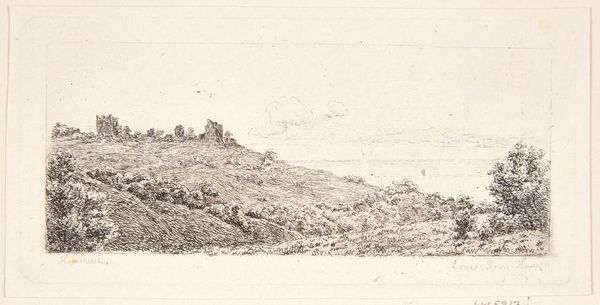
print, etching
#
dutch-golden-age
# print
#
etching
#
landscape
#
realism
Dimensions: height 350 mm, width 532 mm
Copyright: Rijks Museum: Open Domain
Editor: So, this is "Vuurtoren te Katwijk," an etching by Carel Nicolaas Storm van 's-Gravesande, made sometime between 1869 and 1902. It's a landscape dominated by a stone tower, and the detail in the sand dunes is just incredible. It almost feels desolate, but also… purposeful? What do you see in this piece? Curator: I see a powerful commentary on humanity's relationship with the environment and its built structures. This isn't just a pretty landscape; it's a snapshot of a society wrestling with its identity. The tower, imposing yet isolated, represents power structures, perhaps even colonial ambitions. Consider, too, the small figures – are they merely dwarfed by the landscape, or actively shaped by the tower's symbolic dominance? How does this etching participate in a broader discourse about land ownership, labor, and national identity at the time? Editor: That's fascinating, I hadn't considered the social commentary. I was focused on the almost photorealistic quality of the etching. So the figures aren't just people; they are more of a representation of labor at that time? Curator: Exactly! And think about who is represented and who is not. Are there class implications evident in the visual narrative? Does this capture the nuance and social tensions that were prevalent during that era, as Dutch society experienced massive changes in labor, society and class structures? Editor: Okay, now I see how the landscape isn't just a backdrop, but an active player. The tower is imposing but, I wonder, does the presence of those figures somehow imply some hope? A possibility to affect what the tower represents, their labor having value? Curator: An insightful question, indeed! Perhaps the artist encourages us to contemplate the ongoing negotiation of power, the persistent, if often quiet, resistance, and the enduring human presence amidst structures designed to outlast us all. It also makes us think how this scene might apply to modern day structures of labor, dominance, or nationalism, doesn't it? Editor: Definitely, I will never be able to look at another landscape etching the same way! Thanks so much.
Comments
No comments
Be the first to comment and join the conversation on the ultimate creative platform.
